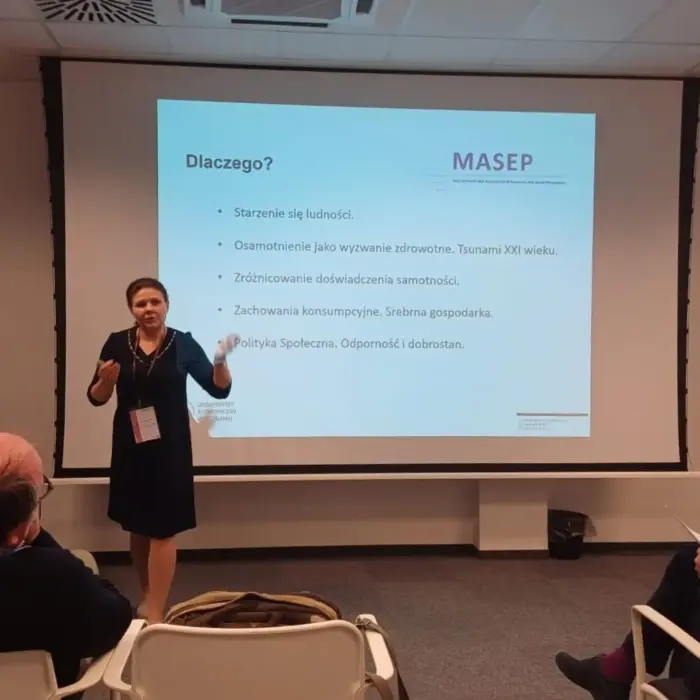Udział w XV Konferencji Naukowej MASEP 2024. Pomiar i ocena zjawisk społecznych i ekonomicznych

Alicja Jajko-Siwek uczestniczyła w jubileuszowej XV SCIENTIFIC CONFERENCE MASEP 2024 Measurement and Assessment of Social and Economic Phenomena (Łódź, 27-29.11.2024) przedstawiając referat pod tytułem: Zróżnicowane doświadczenia samotności wśród osób starszych. Analiza skupień z wykorzystaniem polskiej Skali KZDS.
Abstract
Research Background: As the global population ages, understanding loneliness, social contact, and solitude among older adults is increasingly important. People in the „third age” (65–79 years) often face social changes due to retirement, loss of loved ones, or family structure shifts, which can heighten feelings of aloneness. These factors significantly impact their mental and physical well-being and social participation. Given the growing number of older adults, developing support systems to improve their quality of life is essential.
Purpose of the paper: This study aims to validate the Polish version of the Differential Test of Aloneness (KZDS) and examine three dimensions of aloneness: General Experience of Loneliness (ODO), Dependence on Communication (UKS), and Positive Solitude (PPS). The goal is to understand how different aspects of being alone affect older adults in Poland and identify distinct profiles of aloneness, providing insights for social and market strategies to enhance their well-being.
Methodology/Methods/Data sources: The study used mixed methods, collecting data through paper and online questionnaires from 231 older adults in Poland aged 65–79. The Polish KZDS measured three dimensions of aloneness. The analysis involved Exploratory Factor Analysis (EFA) and Confirmatory Factor Analysis (CFA) to validate the KZDS structure. K-means cluster analysis grouped participants based on their aloneness experiences, followed by sociodemographic profiling.
Findings: The Polish KZDS was validated, confirming its three-factor structure. Cluster analysis revealed three groups: (1) Constructive Solitude, where individuals benefit from solitude; (2) Indifference to Solitude, the largest group, experiences low loneliness but does not find solitude beneficial; and (3) Aversion to Aloneness, marked by high loneliness and a strong need for social contact, without benefits from solitude. Men were more likely to accept solitude, while women showed higher loneliness levels. These findings suggest the need for targeted interventions to address the unique needs of each group.




